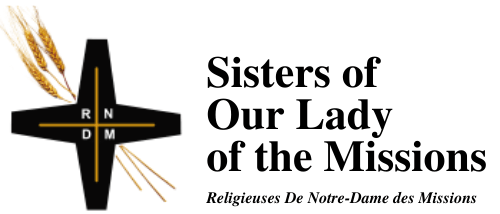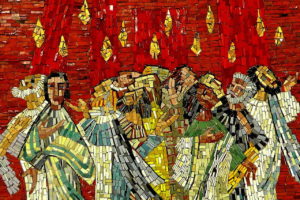Deuteronomy 5:12-15; Psalm 81; 2 Corinthians 4:5-12; Mark 2:23-3:6 (RCL.)
“Here is how we see the Sabbath,” said my Jewish colleague one day. “Six days a week you walk out your front door, glance over at the shrub, and say ‘Oh, I keep forgetting to prune that shrub, it’s getting more overgrown all the time.’ On the Sabbath you walk out your front door, look over at the shrub, and say, ‘Isn’t that a beautiful shrub that God made?’”
And the Christian ministry colleagues nodded in agreement and delight.
Is the idea of a singular day of the week set aside for shared spirituality within a recognized faith tradition credible anymore? For many it is, of course. But to a large extent, in-person attendance at a church or a faith gathering never fully recovered after the pandemic. The trend has probably been a long time in coming, and takes different forms in different communities.
Where I’m living, the local Roman Catholic diocese just announced its second parish slice-and-dice operation in less than a year. After several rounds of parish closings and mergers since 2003, last year the diocese announced that the remaining parishes would be grouped into “families,” with one or maybe two priests to preside at a shifting schedule of Eucharistic liturgies. You’d see bulletin announcements with a distinctly Orwellian flavour such as, “There’s a lot happening in Family 36 this week.” A few days ago another round of closings and mergers was announced.
Hardly any of the mainline denominations are immune from the drop in attendance. ELCA Presiding Bishop Elizabeth Eaton says flatly, “We’re losing members.” Anglicans / Episcopalians, no better.
For those whose lives are built on a five-day work or school week, a weekend day can signify recreation in a secular sense. Thirty-five years ago, the Bangles sang,
“Just another manic Monday.
Wish it were a Sunday.
That’s my fun day.
My I-don’t-have-to-run day.
Just another manic Monday.”
We might have to remind ourselves how radical, and how threatening, was Jesus’ violation of the proscription of work on the Sabbath in his time and his culture. His actions just seem so common-sense. Of course if you can heal someone who is suffering, you reach out and do it, whatever day of the week. If you’re hungry, you eat what’s available. In both cases the real intention was not to recklessly destroy the spirituality of the shared rhythm of time and cosmic movement, but to take it one step farther: “Is it lawful to do good or to do harm on the Sabbath, to save life or to kill?”
It’s about law and life, structure and Spirit. An unjust law does not bind, and Jesus was confronting a raft of laws that had taken on a life of their own. In effect he opened a few windows to let the Spirit blow through. Still, our lives are taken up into the life of the universe, where rhythm and pulsation, dawn and dusk, rise and fall, flourishing and decline, shape how we live. The cosmic rhythms colour the spaces in which we perceive that there is depth and strength and never-ending life in the universe. Sometimes the Spirit may be peeking in through that closed window, waiting for an opportunity.
I wish now I could say that to my younger self, who routinely went into the office on a Sunday afternoon. Just for a few quiet hours. Just to take a bit of pressure off the coming week.
I should have gone straight home from church and cuddled the cat. He was lonely.
© Susan K. Roll
Susan Roll retired from the Faculty of Theology at Saint Paul University, Ottawa, in 2018, where she served as Director of the Sophia Research Centre. Her research and publications are centred in the fields of liturgy, sacraments, and feminist theology. She holds a Ph.D. from the Catholic University of Leuven (Louvain), Belgium, and has been involved with international academic societies in liturgy and theology, as well as university chaplaincy, Indigenous ministry and church reform projects.





Thank you for your Jewish colleague’s comment on how to see the Sabbath, and for the linkage to “Manic Monday”. (a song that leapt from memory, and is now repeating over & over!).
Your subsequent line that “The cosmic rhythms colour the spaces in which we perceive that there is depth and strength and never-ending life in the universe” grounds daily life in larger rhythms